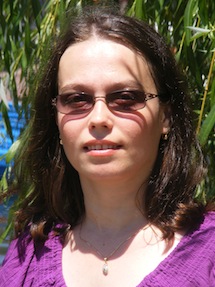
Mária Ercsey-Ravasz
Researcher
Faculty of Physics, Babes-Bolyai University
Transylvanian Institute of Neuroscience (TINS)
Cluj-Napoca, Romania
E-mail: ercsey.ravasz@phys.ubbcluj.ro
After obtaining Ph.D. in Physics and Information Technology, I have spent 3 years as a postdoctoral researcher at the University of Notre Dame, IN, USA. I returned to Romania with a Starting Research Grant, and obtained a Marie Curie Fellowship.
Currently I am a research fellow at the Babes-Bolyai University and also at the Transylvanian Institute of Neuroscience (TINS).
Research interests:
1. Physical structure of the brain, the inter-areal cortical network, functional cortical networks. 2. Networks, centrality measures, clustering, biological networks 3. Analog computing, solving optimization problems with continuos-time dynamical systems, turbulent computing and transiently chaotic dynamical systems, cellular neural networks and their applications.
Most recent publications:
- Răzvan Gămănuţ, Henry Kennedy, Zoltán Toroczkai, Mária Ercsey-Ravasz, David C Van Essen, Kenneth Knoblauch, Andreas Burkhalter, The Mouse Cortical Connectome, Characterized by an Ultra-Dense Cortical Graph, Maintains Specificity by Distinct Connectivity Profiles, Neuron 97, 698-715. e10 , 2018.
- Xunzhao Yin, Behnam Sedighi, Melinda Varga, Mária Ercsey-Ravasz, Zoltán Toroczkai, Xiaobo Sharon Hu, „Efficient analog circuits for Boolean satisfiability”, IEEE Transactions on Very Large Scale Integration (VLSI) Systems, 26 (1), pp. 155-167, 2018.
- H.R. Noori, J. Schottler, M. Ercsey-Ravasz, A. Cosa-Linan, M. Varga, Z. Toroczkai, R. Spanagel, "A multiscale cerebral neurochemical connectome of the rat brain", PLoS Biology, 2002612 (2017)
- Zs. I. Lazar, I. Papp, L. Varga, F. Jarai-Szabo, D. Deritei, M. Ercsey- Ravasz, “Stochastic graph Voronoi tessellation reveals community structure”, Physical Rveiew E, 95, 022306 (2017).
- Sz. Horvát†, Răzvan Gămănuț†, Mária Ercsey-Ravasz†, Loïc Magrou, Bianca Gămănuț, David C. Van Essen, Andreas Burkhalter, Kenneth Knoblauch, Zoltán Toroczkai, Henry Kennedy,”Spatial embedding and wiring cost constrain the functional layout of cortical networks in rodents and primates”, PLoS Biology, 14, e1002512 (2016). († indicates equal contribution)
- M. Varga, R. Sumi, Z. Toroczkai, M. Ercsey-Ravasz, "Order-to-chaos transition in the hardness of random Boolean satisfiability”, Physical Review E, 93, 052211 (2016).
- D. Deritei, W.C. Aird, M. Ercsey-Ravasz, E. Ravasz Regan, "Principles of dynamical modularity in biological regulatory networks", Scientific Reports, 6, 21957 (2016).
- Y. Ren, M. Ercsey-Ravasz, P. Wang, M.C. Gonzalez, Z. Toroczkai, “Predicting commuter flows in spatial networks using a radiation model based on temporal ranges”, Nature Communications, 5, 5347 (2014).
- D. Deritei, Zs. Lazar, I. Papp, F. Jarai-Szabo, R. Sumi, L. Varga, ER Regan, M. Ercsey-Ravasz, “Community detection by graph Voronoi diagrams”, New Journal of Physics, 16, 063007 (2014).
- R. Sumi, B. Molnar, M. Ercsey-Ravasz, “Robust optimization with transiently chaotic dynamical systems”, European Phyics Letters, 106, 40002 (2014).
- N.T. Markov, M. Ercsey-Ravasz, D.C. Van Essen, K. Knoblauch, Z. Toroczkai, H. Kennedy, "Cortical High-density Counter-stream Architectures", Science, 342, 1238406, 2013 doi:10.1126/science.1238406
- M. Ercsey-Ravasz, N.T. Markov, C. Lamy, D.C. Van Essen, K. Knoblauch, Z. Toroczkai, H. Kennedy, "A predictive network model of cerebral cortical connectivity based on a distance rule", Neuron, 80, 184, 2013 doi:10.1016/j.neuron.2013.07.036
- B. Molnár, M. Ercsey-Ravasz, "Asymmetric Continuous-Time Neural Networks without Local Traps for Solving Constraint Satisfaction Problems". PLoS ONE 8(9): e73400, 2013. doi:10.1371/journal.pone.0073400
- N.T. Markov, M. Ercsey-Ravasz, C. Lamy, A.R. Ribeiro Gomes, L. Magrou, P. Misery, P. Giroud, P. Barone, C. Dehay, Z. Toroczkai, K. Knoblauch, D.C. Van Essen, H. Kennedy. "The role of long-range connections on the specificity of the macaque interareal cortical network" PNAS 110, 5187 (2013), doi:10.1073/pnas.1218972110
- M. Ercsey-Ravasz, Z. Toroczkai, "The Chaos Within Sudoku", Scientific Reports 2, 755 (2012) doi:10.1038/srep00725
- N. T. Markov, M. Ercsey-Ravasz, A.R. Ribiero Gomes, C. Lamy, J. Vezoli, L. Magrou, P. Misery, A. Falchier, R. Quilodran, J. Sallet, M.A. Gariel, R. Gamanut, C. Huissoud, S. Clavagnier, P. Giroud, D. Sappey-Marinier, P. Barone, C. Dehay, Z. Toroczkai, K. Knoblauch, D.C. Van Essen, H. Kennedy. "A weighted and directed interareal connectivity matrix for macaque cerebral cortex" Cerebral Cortex , advance access , Sep. 25 (2012)
- B. Molnár, Z. Toroczkai, M. Ercsey-Ravasz, "Continuous-time Neural Networks Without Local Traps for Solving Boolean Satisfiability", CNNA 2012, Torino, Italy (2012) doi:10.1109/CNNA.2012.6331411
- M. Ercsey-Ravasz, R. Lichtenwalter, N.W. Chawla, Z. Toroczkai, "Range-limited Centrality Measures in Non-weighted and Weighted Complex Networks, Physical Review E 85, 066103 (2012). arxiv:1111.5382
- M. Ercsey-Ravasz, Z. Toroczkai, Z. Lakner, J. Baranyi, "Complexity of the International Agro-Food Trade Network", PLoS ONE 7(5), e37810 (2012). doi:10.1371/journal.pone.0037810
- M. Ercsey-Ravasz, Z. Toroczkai, "Optimization Hardness as Transient Chaos in an Analog Approach to Constraint Satisfaction", Nature Physics 7, 966 (2011) arxiv:1208.0526
- N.T. Markov, P. Misery, A. Falchier, C. Lamy, J. Vezoli, R. Quilodran, P. Giroud, M.A. Gariel, M. Ercsey-Ravasz, L.J. Pilaz, C. Huissoud, P. Barone, C. Dehay, Z. Toroczkai, D.C. Van Essen, H. Kennedy, K. Knoblauch. "Weight consistency specifies regularities of cortical networks." Cerebral Cortex 21 , 1254-1272 (2011). free journal access .
- M. Ercsey-Ravasz, Z. Toroczkai, "Centrality Scaling in Large Networks", Physical Review Letters 105, 038701 (2010) 10.1103/PhysRevLett.105.038701
The heavily connected brain - Cortical high-density counterstream architectures

Background.The cerebral cortex is divisible into many individual areas, each exhibiting distinct connectivity profiles, architecture, and physiological characteristics. Interactions among cortical areas underlie higher sensory, motor, and cognitive functions. Graph theory provides an important framework for understanding network properties of the interareal weighted and directed connectivity matrix reported in recent studies.Density and topology of the cortical graph. Figure (Left) The 66% density of the cortical matrix (black triangle) is considerably greater than in previous reports (colored points) and is inconsistent with a small-world network. (Right) A bow-tie representation of the high-density cortical matrix. The high-efficiency cortical core has defined relations with the cortical periphery in the two fans. Advances. We derive an exponential distance rule that predicts many binary and weighted features of the cortical network, including efficiency of information transfer, the high specificity of long-distance compared to short-distance connections, wire length minimization, and the existence of a highly interconnected cortical core. We propose a bow-tie representation of the cortex, which combines these features with hierarchical processing. Outlook. The exponential distance rule has important implications for understanding scaling properties of the cortex and developing future large-scale dynamic models of the cortex.
- N.T. Markov, M. Ercsey-Ravasz, D.C. Van Essen, K. Knoblauch, Z. Toroczkai, H. Kennedy, "Cortical High-density Counter-stream Architectures", Science, 342, 1238406, 2013 doi:10.1126/science.1238406
The Exponential Distance Rule of the Brain

Recent advances in neuroscience have engendered interest in large-scale brain networks. Using a consistent database of cortico-cortical connectivity, generated from hemisphere-wide, retrograde tracing experiments in the macaque, we analyzed interareal weights and distances to reveal an important organizational principle of brain connectivity. Using appropriate graph theoretical measures, we show that although very dense (66%), the interareal network has strong structural specificity. Connection weights exhibit a heavy-tailed lognormal distribution spanning five orders of magnitude and conform to a distance rule reflecting exponential decay with interareal separation. A single-parameter random graph model based on this rule predicts numerous features of the cortical network: (1) the existence of a network core and the distribution of cliques, (2) global and local binary properties, (3) global and local weight-based communication efficiencies modeled as network conductance, and (4) overall wire-length minimization. These findings underscore the importance of distance and weight-based heterogeneity in cortical architecture and processing.
- M. Ercsey-Ravasz, N.T. Markov, C. Lamy, D.C. Van Essen, K. Knoblauch, Z. Toroczkai, H. Kennedy, "A predictive network model of cerebral cortical connectivity based on a distance rule", Neuron, 80, 184, 2013 doi:10.1016/j.neuron.2013.07.036
The Chaos Within Sudoku
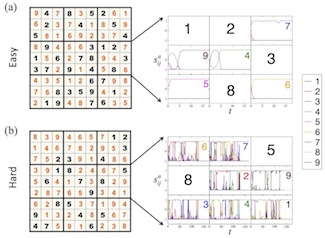
The mathematical structure of Sudoku puzzles is akin to hard constraint satisfaction problems lying at the basis of many applications, including protein folding and the ground-state problem of glassy spin systems. Via an exact mapping of Sudoku into a deterministic, continuous-time dynamical system, here we show that the difficulty of Sudoku translates into transient chaotic behavior exhibited by this system. We also show that the escape rate κ, an invariant of transient chaos, provides a scalar measure of the puzzle’s hardness that correlates well with human difficulty ratings. Accordingly, η=-log10 (κ) can be used to define a ‘‘Richter’’-type scale for puzzle hardness, with easy puzzles having 0 < η ≤ 1, medium ones 1 < η ≤ 2, hard with 2 < η ≤ 3 and ultra-hard with η > 3. To our best knowledge, there are no known puzzles with η > 4.
M. Ercsey-Ravasz, Z. Toroczkai, Scientific Reports 2, 755 (2012) doi:10.1038/srep00725
Echoes in media: Huffington Post , Daily Mail , Technology review , CBS news , Income Magazine , Antena 3
Also see simulation movie on youtubeTurbulent Computation
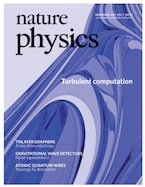
Boolean satisfiability (k-SAT) is one of the most studied optimization problems, as an efficient (that is, polynomial-time) solution to k-SAT (for k > 2) implies efficient solutions to a large number of hard optimization problems. Here we propose a mapping of k-SAT into a deterministic continuous-time dynamical system with a unique correspondence between its attractors and the k-SAT solution clusters. We show that beyond a constraint density threshold, the analog trajectories become transiently chaotic, and the boundaries between the basins of attraction of the solution clusters become fractal, signalling the appearance of optimization hardness. Analytical arguments and simulations indicate that the system always finds solutions for satisfiable formulae even in the frozen regimes of random 3-SAT and of locked occupation problems (considered among the hardest algorithmic benchmarks), a property partly due to the system's hyperbolic character. The system finds solutions in polynomial continuous time, however, at the expense of exponential fluctuations in its energy function.
M. Ercsey-Ravasz, Z. Toroczkai, Nature Physics 7, 966 (2011) doi:10.1038/nphys2105 , arxiv:1208.0526
Echoes in media: Notre Dame News
Vulnerability of the Food Trade Network
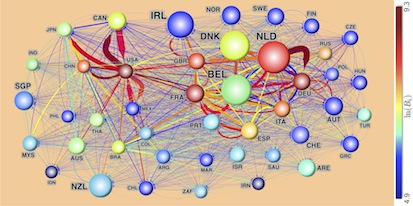
With the world’s population now in excess of 7 billion, it is vital to ensure the chemical and microbiological safety of our food, while maintaining the sustainability of its production, distribution and trade. Using UN databases, here we show that the international agro-food trade network (IFTN), with nodes and edges representing countries and import-export fluxes, respectively, has evolved into a highly heterogeneous, complex supply-chain network. Seven countries form the core of the IFTN, with high values of betweenness centrality and each trading with over 77% of all the countries in the world. Graph theoretical analysis and a dynamic food flux model show that the IFTN provides a vehicle suitable for the fast distribution of potential contaminants but unsuitable for tracing their origin. In particular, we show that high values of node betweenness and vulnerability correlate well with recorded large food poisoning outbreaks.
M. Ercsey-Ravasz, Z. Toroczkai, Z. Lakner, J. Baranyi, PLoS ONE 7(5), e37810 (2012). doi:10.1371/journal.pone.0037810
Echoes in media: Wired.com , Science Daily
Centrality scaling in large networks
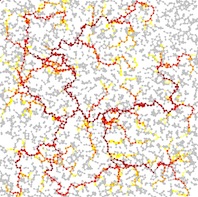
Betweenness centrality lies at the core of both transport and structural vulnerability properties of complex networks; however, it is computationally costly, and its measurement for networks with millions of nodes is nearly impossible. By introducing a multiscale decomposition of shortest paths, we show that the contributions to betweenness coming from geodesics not longer than L obey a characteristic scaling versus L, which can be used to predict the distribution of the full centralities. The method is also illustrated on a real-world social network of 5.5×106 nodes and 2.7×107 links.
M. Ercsey-Ravasz, Z. Toroczkai, Physical Review Letters 105, 038701 (2010) 10.1103/PhysRevLett.105.038701
